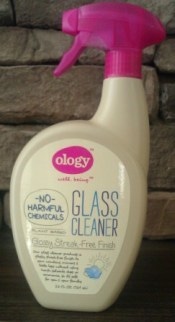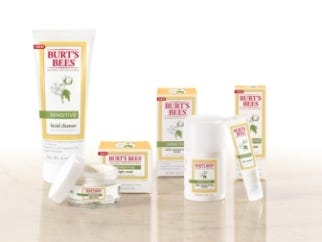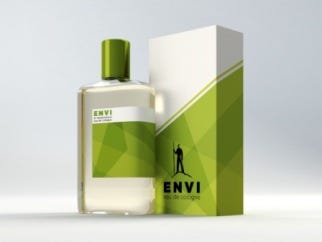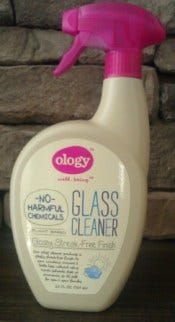Getting the balance right
January 30, 2014


Burt
The concept of sustainable packaging has evolved from the days in which "eco-friendly" meant simply adding recycled content, or slapping leafy green graphics on the label. From Walmart's sustainability scorecard, to planet-minded consumers, parties all along the packaging supply chain are demanding sustainable solutions.
However, not everyone understands what "sustainable packaging" means-and that includes packaging professionals themselves. To create a package that works, you must first understand what the phrase means, the factors that contribute to a package's sustainability and how to maintain a balance between all the demands placed on a package-eco-friendliness, durability, cost-efficiency, aesthetics and more.
Ask the right questions
"It's best to first get a baseline understanding of the different avenues to pursue and levers to pull," says Liam Hawry, director of structural packaging for Berlin Packaging. "Having basic background knowledge of sustainable strategies is invaluable when one begins to delve into the rabbit hole of specific technologies."
Hawry recommends involved parties explore books (such as "Biomimicry," "Cradle to Cradle" and "Natural Capitalism"), organizations like the Sustainable Packaging Coalition and other reputable sources. He points out that exposing your staff to a variety of resources helps greatly in big-picture thinking.
"Thinking broadly will help save time and avoid the pitfall of getting overly excited about a single ‘next big thing,'" he says.
What's more, asking questions and keeping an open dialogue can be revealing. In some cases, parties can learn that achieving sustainability goals isn't as Herculean a task as they thought.
"It's funny, sustainability officers still come to us, expecting this to be an imposition, a hoop to jump through, a paper trail to chase, a premium feature," says David Lunati, vp of marketing and business development for Monadnock Paper Mills. "It's just not that way."
Use the right resources
As Hawry points out, arming yourself with knowledge from a variety of resources is invaluable in succeeding in the sustainable packaging arena. Here are a number of resources that can help you ask the correct questions, to arrive at the best answers, in the process:
Embracing Sustainability: Put together by the staff of Berlin Packaging, this resource (available on the company site) helps even sustainability newbies cut through the noise surrounding the topic, assign meaning to commonly used buzzwords, determine sustainability goals, locate the right partners and execute packaging successfully.
Monadnock Field Guide: The company offers this annual resource online, designed to help packaging designers and print professionals make the right selection for a particular project when sustainability is a concern.
Sustainable Packaging Coalition: This organization offers an impressive wealth of information geared toward professionals looking to increase their sustainable packaging knowhow. In addition to the Design Guide referenced by Hawry, SPC's resources include its Essentials of Sustainable Packaging course, a one-day program that touches upon the impact of packaging, materials selection, messaging and more.
PackagingDigest.com Sustainable Packaging channel: Our website is updated daily with the latest sustainability-centric equipment, materials, designs and practices; visit the home page and select "Sustainable Packaging" under the "Packaging Channels" tab.
Pick the right materials
Further, as the range of materials that can be effectively used for sustainable packaging solutions is broad and expanding every day, so is general understanding of what types of materials are feasible. Whereas plastic material previously was widely perceived as being chemical laden and not planet-friendly, even folks on the retail and consumer side understand that putting a product in lightweight, recyclable resin containers can boost overall sustainability.

Monadnock Envi paperboard
Lunati points out that by working closely with suppliers like Monadnock Paper Mills, brands and their packaging teams can ensure that they come up with packaging materials and configurations that meet their goals across the supply chain, implementing cost-effective solutions. Also, companies with a mix of bio-based and conventional material offerings such as Dordan Manufacturing can answer questions about what material will work best for an application and guide clients toward a winning option.
Sometimes, the perfect material doesn't yet exist; in that case, suppliers can work together to create custom solutions that fit the bill. Monadnock recently provided Burt's Bees (a brand owned by Clorox) with material from its Envi line of recycled and FSC-certified paperboards, tailored to meet its particular brand goals.
"As we began launching new products in our face care category, we were searching for a bright white premium paperboard with a high post-consumer recycled content," says Julie Colon, brand design manager for Burt's Bees. "We also wanted a paperboard that was FSC certified. When we found there were no papers currently on the market with these attributes, we decided to reach out to Monadnock to help us develop a custom paperboard from their Envi line with at least 60 percent post-consumer content. The paper created is a beautiful bright white with a matte finish, is FSC certified and contains 60 percent post-consumer recycled content."
Send the right message
Spreading the word about sustainable packaging benefits is an ongoing effort for parties all long the supply chain, including materials companies.
"Although Monadnock was an early adopter of sustainable practices, we did not promote it heavily," says Lunati. "It's just something we did because it was the right thing to do. Now everyone is asking the question: How can you help me meet my sustainability goals? We have a very mature answer and offering. And it's a core part of our value proposition for brand owners."
According to Chandler Slavin, sustainability coordinator at Dordan Manufacturing, communicating sustainability can be challenging, whether the message is aimed at a client or the shopper in a store.
"In a recent FTC consumer perception study, it was found that the majority of consumers surveyed believed that ‘sustainability' meant ‘long lasting and durable.' If our customers' customers don't understand the value proposition of sustainable products and packaging, it is difficult to expect those making the professional purchasing decisions to treat it as priority," she says
However, Slavin points out, efforts such as retailer initiatives, programs from non-governmental organizations and industry proactivity-have helped packaging partners effectively educate themselves on developing sustainable packaging solutions.

Walgreen
On-pack messaging is one way to communicate sustainability to consumers. For example, Berlin Packaging recently worked with Walgreen Co. to create the Ology line of household products. The package appearance communicates sustainability through use of 100-percent post-consumer HDPE, with a light-brown hue that conveys "natural," and clean, curvy lines that underscore that. Taking it further, the label-front and back-clearly tells the consumer that the package is recycled, that the contents are free of harmful chemicals (with a list of all ingredients to reflect such) and refers concerned shoppers to the organization Healthy Child Healthy World to learn more about overall sustainability.
Hit the right events
Networking with packaging professionals from across the supply chain-hearing their experiences, sharing war stories and attacking challenges together-is an effective way to boost sustainable packaging prowess. The upcoming Sustainability in Packaging 2013 conference (taking place March 13-15 in Orlando) lets people in the industry gather and learn how to successfully incorporate sustainable packaging materials, design practices and other aspects to create packaging that resonates with consumers. The event, produced by Smithers Pira in partnership with Packaging Digest, includes a range of keynotes, panel discussions and sessions targeting topics that get to the heart of the matter and encourage implementation of far-reaching solutions.
"Sustainability in Packaging 2013 offers our most ambitious look into the sustainable packaging supply chain ever," says Barbara Fowler, conference director at Smithers Pira. "The 2013 agenda brings together a diverse group of brand owners-Dell, Office Depot and Hasbro are just a few who will be presenting-to share their views on everything from their market research into what consumers want to how they are looking to reduce waste in the future. Additionally, the more than 300 R&D trailblazers, sustainability gurus and end users in attendance will discuss the impact of e-commerce on packaging design and sustainability; biodigesters; innovation and new technologies; and EPR around the globe."
Part of the event's draw is the participation of top packaging and CPG executives at the seminars and keynote addresses. Among those scheduled to present:
Joshua Onysko, founder/CEO of Pangea Organics: Speaking during the Technology Developments session on Thurs., Mar. 14. Onysko and his company offer a wealth of experience creating packaging that incorporates sustainable materials, design and on-pack messaging that brings it all together.
Shriram Venkataraman, sr director of beverage packaging R&D for Pepsico: The food and beverage giant is a leader in terms of incorporating environmentally friendly packaging. Venkataraman will share a glimpse at the company's experiences during the Packaging Optimization vs Source Reduction panel discussion on Wednesday.
Beto Lopez, global lead systems design with IDEO: The design experts at IDEO have helped a range of clients streamline their operations, products and other aspects. Lopez will share insights during Thursday morning's keynote address.
Alastair MacGregor, chief executive of Innovia Technology Ltd.: The company offers a number of films and materials packaging engineers can incorporate to improve a package's sustainability. MacGregor will share advice during Thursday's Sustainable Innovation that Turns into Supply Chain Efficiency session.
For more information or to register, visit the conference site at www.sustainability-in-packaging.com.
Berlin Packaging, 800-223-7546
Dordan Manufacturing, 800-663-5460
IDEO, 415-615-5054
Innovia Technology Ltd., 877-822-3456
Monadnock Paper Mills, 800-221-2159
Smithers Pira, 207-781-9800
Sustainable Packaging Coalition, 434-817-1424 x319
.
About the Author(s)
You May Also Like


